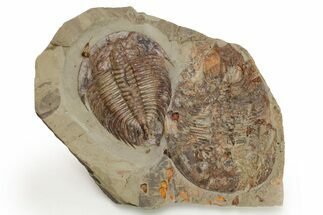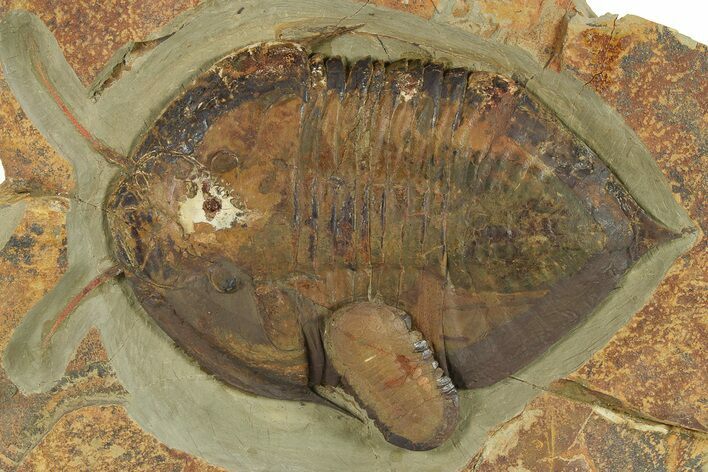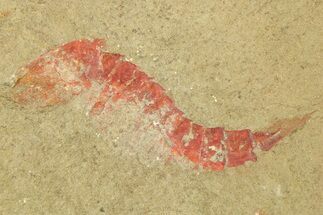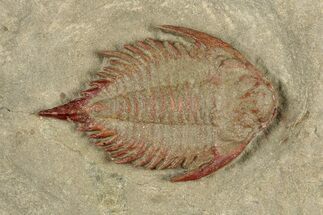This Specimen has been sold.
7" Megistaspis With Preserved Antennae & Symphysurus
This is a large, 7" long Megistaspis trilobite from the Fezouata Formation with both antennae preserved. Soft bodied preservation is quite rare in the fossil record but occasionally seen on trilobites from this locality. The antennae are both natural and you can see the segmentation on them under magnification. Overlaying the left hand side of its thorax is a Symphysurus trilobite. There is some restoration to the left hand side of the tail as well as on the left cheek of the trilobite. I would say it's about 10% restoration in total.
About Trilobites
Trilobites are an extinct class of marine arthropods that thrived for nearly 270 million years, from the early Cambrian to the end of the Permian period (around 521 to 252 million years ago). They are one of the most successful and diverse groups in the history of life, with over 25,000 described species spanning a wide range of sizes, shapes, and ecological niches. Known for their distinctive, segmented exoskeletons, trilobites provide invaluable insights into the evolutionary history of arthropods and the dynamics of ancient marine ecosystems.
Trilobites are an extinct class of marine arthropods that thrived for nearly 270 million years, from the early Cambrian to the end of the Permian period (around 521 to 252 million years ago). They are one of the most successful and diverse groups in the history of life, with over 25,000 described species spanning a wide range of sizes, shapes, and ecological niches. Known for their distinctive, segmented exoskeletons, trilobites provide invaluable insights into the evolutionary history of arthropods and the dynamics of ancient marine ecosystems.
SPECIES
Megistaspis (Ekeraspis) hammondi & Symphysurus
LOCATION
Zagora Area, Morocco
FORMATION
Fezouata Formation
SIZE
7" long on 12 x 9" rock
CATEGORY
SUB CATEGORY
ITEM
#284066
We guarantee the authenticity of all of our specimens.
 Reviews
Reviews
















